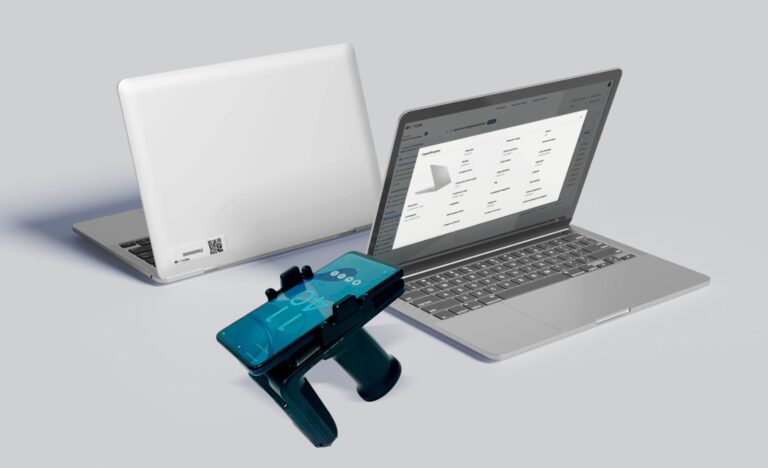In the U.S. educational system, federal funding plays a crucial role in supporting schools’ programs, infrastructure, and growth. With this financial aid comes a responsibility: ensuring full compliance with federal regulations, especially regarding asset management. One of the key mandates is conducting physical inventories of federally funded assets at least once every two years, as stated in 2 C.F.R. Part 200.313.
Failure to comply with this regulation may result in severe consequences, including the loss of future funding. More than a bureaucratic step, compliance is a safeguard for your school’s financial sustainability and operational excellence. CPCON GROUP offers the tools, technology, and expertise to support schools in managing this process efficiently and with confidence.
Table of Contents
ToggleAre US schools federally funded?
Yes, most public schools in the United States receive federal funding. While the bulk of education funding comes from state and local sources, the federal government contributes through programs aimed at equity, accessibility, and innovation.
Federal aid supports special education, low-income student services, technology initiatives, and infrastructure improvements.
To access these funds, schools must demonstrate compliance with specific regulations—including detailed tracking and inventory of federally funded assets.
How much does the US government pay for education?
The federal government allocates billions of dollars annually to support K-12 and higher education systems.
Although federal contributions represent around 8–10% of total school funding, the amounts are significant and often targeted toward essential programs.
Programs like Title I, IDEA, and ESSER provide critical resources. Schools that fail to meet federal compliance requirements risk losing access to these funds and weakening their institutional stability.

What is the main source of local funding for schools?
The primary source of local school funding in the U.S. is property taxes. These taxes are levied by local governments and channeled into district budgets to cover teacher salaries, maintenance, and operational costs.
While local funding is substantial, federal resources supplement specific needs and initiatives.
Ensuring compliance with regulations like 2 C.F.R. Part 200.313 helps schools maintain a diverse and sustainable funding mix.
Are public schools free in the USA?
Yes, public education is free for all students from kindergarten through 12th grade in the United States.
However, “free” does not mean costless—schools still require funding for materials, staff, infrastructure, and programs.
This is where federal funding becomes essential. To retain access to these resources, schools must adhere to federal standards, including proper asset documentation and inventory audits.
What Schools Need to Know About 2 C.F.R. Part 200.313
Federal funding comes with responsibilities—especially when it comes to how schools manage physical assets.
One of the most critical regulations in this context is 2 C.F.R. Part 200.313, which mandates specific inventory practices for federally funded items.
This rule promotes accountability and prevents asset loss or misuse. Schools that fail to comply with this requirement risk losing eligibility for future grants and undermining trust with regulatory bodies.
What Happens If Your School Doesn’t Comply?
When schools fail to meet federal inventory requirements, the consequences go beyond a warning.
Non-compliance can lead to immediate ineligibility for future grants, affecting both current operations and long-term planning.
For institutions that depend on federal support, these consequences can be financially devastating. Proactive asset management is key to ensuring continued access to vital resources.

How to Conduct Physical Inventories and Stay Compliant
To meet federal inventory obligations with confidence, schools should follow structured procedures supported by reliable tools.
These measures help maintain funding eligibility and improve operational transparency.
- Develop a clear inventory plan with defined timelines and responsibilities.
- Use inventory software and RFID tags to ensure tracking accuracy.
- Train staff on federal compliance procedures and asset documentation.
- Conduct periodic internal audits to identify and correct discrepancies.
- Maintain thorough and accessible records for all inventory actions.
How CPCON GROUP Can Help Schools Stay Compliant
CPCON GROUP specializes in helping educational institutions navigate compliance with federal funding requirements.
Our services are tailored to schools of all sizes, focusing on simplification, transparency, and risk mitigation.
We provide:
- RFID and barcode asset tagging systems.
- Inventory software customized for schools.
- On-site physical inventory execution.
- Consulting on 2 C.F.R. Part 200.313 and related federal standards.
Partnering with CPCON means peace of mind. Our team ensures that your institution stays compliant, audit-ready, and focused on delivering quality education.
Conclusion: Compliance Is Key to Sustaining Federal Funding
Compliance with regulations such as 2 C.F.R. Part 200.313 is essential for schools receiving federal support.
Conducting physical asset inventories isn’t just a formality—it’s a core practice to protect institutional funding.
By implementing best practices and leveraging CPCON’s expertise, schools can secure ongoing financial support and maintain operational excellence.
FAQ
What is 2 C.F.R. Part 200.313 and how does it apply to schools?
It is a federal regulation requiring physical inventories of equipment bought with federal funds every two years. Schools must document the condition, location, and use of each asset.
Why is educational asset inventory important for compliance?
It ensures accountability, reduces risk of misuse, and helps schools remain eligible for federal grants.
How can schools reduce the risk of losing public funds?
By conducting regular inventories, using reliable tracking systems, and maintaining detailed records of all assets.
What technology helps schools manage asset inventories?
RFID tags, barcode labels, and inventory software streamline tracking and ensure accuracy in audits.
What are the benefits of school asset management systems?
They improve compliance, reduce manual errors, enhance visibility, and support smarter budgeting.
How can consulting help with federal funding compliance?
Expert consultants provide guidance on legal requirements, audit preparation, and implementing best practices.
How can CPCON help?
CPCON delivers complete solutions—from software and tagging to consulting and physical inventory services—to help schools stay compliant and secure federal funding.
























